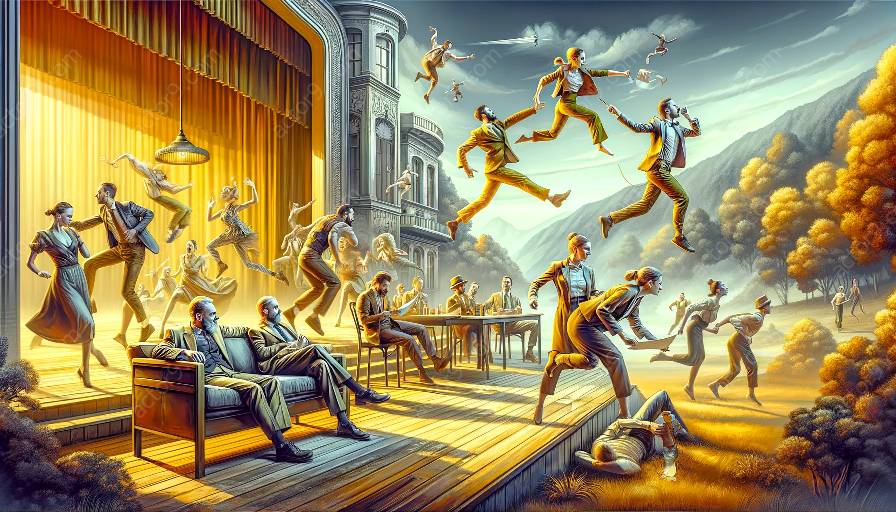Physical comedy has long been recognized as a powerful tool for examining and critiquing power dynamics and social hierarchies within society. In the context of comedic aspects of physical theatre, this form of performance art provides a unique lens through which to explore the intersection of humor and societal power structures.
Understanding Physical Comedy
Physical comedy, as a genre of performance, relies on exaggerated bodily movements, slapstick humor, and often absurd situations to elicit laughter from audiences. It is an art form that has the potential to transcend language and cultural barriers, making it a universal form of expression.
Power Dynamics and Hierarchies in Society
Social hierarchies and power dynamics are pervasive in our everyday lives, influencing interactions within various social contexts. These dynamics often reflect unequal distributions of power, privilege, and authority within society. Physical comedy serves as a poignant medium to examine, challenge, and satirize these power differentials, shedding light on societal inequalities and injustices.
The Role of Physical Theatre
Physical theatre, a form of performance that emphasizes physical movement and expression over dialogue, provides an ideal platform for the exploration of power dynamics and hierarchies. By incorporating comedic elements into physical theatre, performers can subvert traditional power structures and norms, offering audiences a fresh perspective on societal inequality through laughter and entertainment.
Subversive Nature of Physical Comedy
Through the use of exaggerated physicality and humor, physical comedy can serve as a subversive commentary on societal power dynamics. Performers often use comedic elements to challenge established norms, critique authority figures, and dismantle oppressive structures, thereby empowering audiences to critically reflect on the status quo.
Impact on Societal Structures
Physical comedy, when combined with the analysis of power dynamics and hierarchies, has the potential to instigate conversations and provoke thought regarding societal structures. By eliciting laughter and amusement, physical comedy can create a disarming atmosphere that allows for the examination of serious social issues, ultimately contributing to societal awareness and change.
Conclusion
Physical comedy, in the context of comedic aspects of physical theatre, serves as a powerful conduit for dissecting power dynamics and hierarchies in society. Its ability to provoke laughter while challenging societal norms makes it a valuable tool for addressing critical social issues. By embracing the inherent comedic elements of physical theatre, performers can engage audiences in meaningful conversations about power, privilege, and social justice.




































